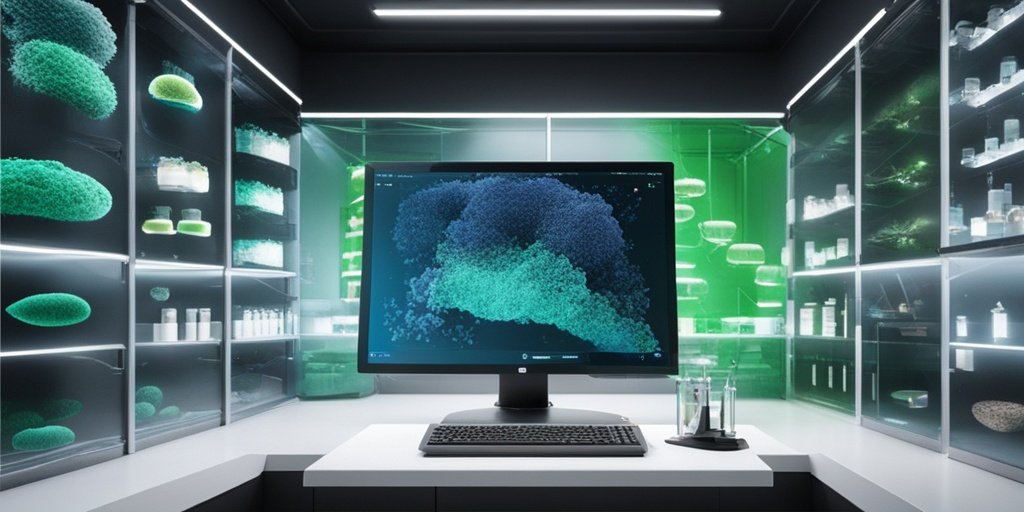⚡ Quick Summary
This study investigates the salivary microbiota in patients with persistent pulmonary nodules (pPNs), utilizing 16S rRNA sequencing and machine learning to identify potential biomarkers. The findings reveal significant differences in microbial diversity and highlight six core genera as promising biomarkers for pPNs.
🔍 Key Details
- 📊 Dataset: 483 participants (141 healthy controls, 342 patients with pPNs)
- 🧬 Methodology: 16S rRNA gene sequencing of saliva samples
- ⚙️ Technology: Seven machine learning algorithms including LightGBM
- 🏆 Performance: High-accuracy predictive model developed
🔑 Key Takeaways
- 🔬 Salivary microbiota shows potential as a diagnostic tool for pPNs.
- 📉 Lower microbial diversity observed in patients with pPNs compared to healthy controls.
- 🌟 Six core genera identified as biomarkers: Fusobacterium, Solobacterium, Actinomyces, Porphyromonas, Atopobium, and Peptostreptococcus.
- 🤖 Machine learning algorithms, particularly LightGBM, demonstrated high accuracy in identifying biomarkers.
- 📈 Visualization system developed for pPNs risk prediction.
- 🧬 Functional pathways of salivary microbiota were predicted using the PICRUSt2 algorithm.
- 💡 Insights into immune responses and metabolic activities differences between groups.
- 🌍 Study conducted from June 2022 to January 2024.

📚 Background
Persistent pulmonary nodules (pPNs) are a significant clinical challenge, often requiring careful monitoring and management. Recent studies have suggested that the oral microbiome may play a role in various health conditions, including respiratory diseases. Understanding the microbial variations in the oral environment of patients with pPNs could provide valuable insights into their diagnosis and management.
🗒️ Study
This research involved a comprehensive analysis of saliva samples from 483 participants, including 141 healthy controls and 342 patients diagnosed with pPNs. The study aimed to explore microbial diversity and identify potential biomarkers through advanced sequencing techniques and machine learning algorithms, ensuring robust results through fivefold cross-validation.
📈 Results
The analysis revealed that the salivary microbiota in patients with pPNs exhibited significantly lower α- and β-diversity compared to healthy individuals. The LightGBM model was particularly effective, identifying six core genera as biomarkers for pPNs. Additionally, the study uncovered differences in immune responses and metabolic activities between the two groups, suggesting a complex interplay between the microbiome and pulmonary health.
🌍 Impact and Implications
The findings from this study underscore the potential of salivary microbiota as a non-invasive diagnostic tool for pPNs. By identifying specific microbial biomarkers, healthcare professionals may be able to facilitate earlier detection and targeted interventions, ultimately improving patient outcomes. This research opens new avenues for integrating microbiome analysis into clinical practice, potentially transforming the management of pulmonary conditions.
🔮 Conclusion
This study highlights the promising role of salivary microbiota in the diagnosis and management of persistent pulmonary nodules. The integration of machine learning with microbiome analysis could pave the way for innovative diagnostic approaches in clinical settings. Continued research in this area is essential to fully understand the implications of microbial variations on respiratory health and disease management.
💬 Your comments
What are your thoughts on the potential of salivary microbiota as a diagnostic tool for pulmonary conditions? We invite you to share your insights and engage in a discussion! 💬 Leave your comments below or connect with us on social media:
Diagnostic potential of salivary microbiota in persistent pulmonary nodules: identifying biomarkers and functional pathways using 16S rRNA sequencing and machine learning.
Abstract
BACKGROUND: The aim of this study was to explore the microbial variations and biomarkers in the oral environment of patients with persistent pulmonary nodules (pPNs) and to reveal the potential biological functions of the salivary microbiota in pPNs.
MATERIALS AND METHODS: This study included a total of 483 participants (141 healthy controls and 342 patients with pPNs) from June 2022 and January 2024. Saliva samples were subjected to sequencing of the V3-V4 region of the 16S rRNA gene to assess microbial diversity and differential abundance. Seven advanced machine learning algorithms (logistic regression, support vector machine, multi-layer perceptron, naïve Bayes, random forest, gradient boosting decision tree, and LightGBM) were utilized to evaluate performance and identify key microorganisms, with fivefold cross-validation employed to ensure robustness. The Shapley Additive exPlanations (SHAP) algorithm was employed to explain the contribution of these core microbiotas to the predictive model. Additionally, the PICRUSt2 algorithm was used to predict the microbial functions.
RESULTS: The salivary microbial composition in pPNs group showed significantly lower α- and β-diversity compared to healthy controls. A high-accuracy LightGBM model was developed, identifying six core genera-Fusobacterium, Solobacterium, Actinomyces, Porphyromonas, Atopobium, and Peptostreptococcus-as pPNs biomarkers. Additionally, a visualization pPNs risk prediction system was developed. The immune responses and metabolic activities differences in salivary microbiota between the patients with pPNs and healthy controls were revealed.
CONCLUSIONS: This study highlights the potential clinical applications of the salivary microbiota for enable earlier detection and targeted interventions, offering significant promise for advancing clinical management and improving patient outcomes in pPNs.
Author: [‘Zeng X’, ‘Ma Q’, ‘Huang CX’, ‘Xiao JJ’, ‘Fu X’, ‘Ren YF’, ‘Qu YL’, ‘Xiang HX’, ‘Lei M’, ‘Zheng RY’, ‘Zhong Y’, ‘Xiao P’, ‘Zhuang X’, ‘You FM’, ‘He JW’]
Journal: J Transl Med
Citation: Zeng X, et al. Diagnostic potential of salivary microbiota in persistent pulmonary nodules: identifying biomarkers and functional pathways using 16S rRNA sequencing and machine learning. Diagnostic potential of salivary microbiota in persistent pulmonary nodules: identifying biomarkers and functional pathways using 16S rRNA sequencing and machine learning. 2024; 22:1079. doi: 10.1186/s12967-024-05802-7